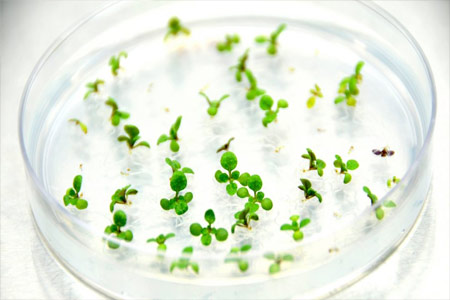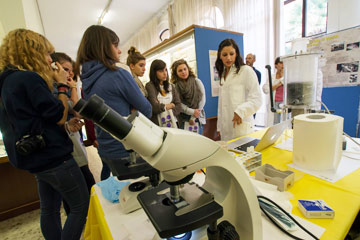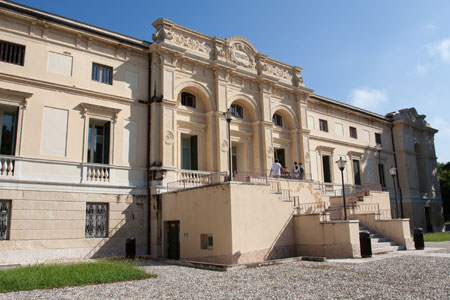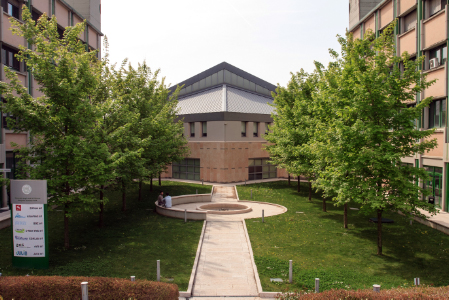|
Laurea in Biotecnologie [L-2]
Corso a esaurimento
|
Bioinformatica e banche dati biologiche (2025/2026)
|
6
|

|
3
|
(Mod. 2)
|
|
Laurea magistrale in Molecular and Medical Biotechnology
|
Computational biology (2025/2026)
|
6
|

|
6
|
|
|
Dottorato in Biotecnologie Molecolari, Industriali ed Ambientali
|
Innovative strategies in drug discovery: from enzyme structure-function to targeted protein degradation (2025/2026)
|
4
|
|
0,5
|
|
|
Laurea in Bioinformatica [L-31]
Corso a esaurimento
|
Laboratorio di bioinformatica (2025/2026)
|
12
|

|
3
|
(Mod.2 Teoria)
|
|
3
|
(Mod.2 Laboratorio)
|
|
Laurea in Biotecnologie [L-2]
Corso a esaurimento
|
Bioinformatica e banche dati biologiche (2024/2025)
|
6
|

|
3
|
(Mod. 2)
|
|
Laurea magistrale in Molecular and medical biotechnology [LM-9]
Corso a esaurimento
|
Computational biology (2024/2025)
|
6
|

|
6
|
|
|
Laurea in Bioinformatica [L-31]
Corso a esaurimento
|
Laboratorio di bioinformatica (2024/2025)
|
12
|

|
3
|
(Mod.2 Teoria)
|
|
3
|
(Mod.2 Laboratorio)
|
|
Laurea in Biotecnologie [L-2]
Corso a esaurimento
|
Bioinformatica e banche dati biologiche (2023/2024)
|
6
|

|
3
|
(Mod. 2)
|
|
Laurea magistrale in Molecular and medical biotechnology [LM-9]
Corso a esaurimento
|
Computational biology (2023/2024)
|
6
|

|
6
|
|
|
Laurea in Bioinformatica [L-31]
Corso a esaurimento
|
Laboratorio di bioinformatica (2023/2024)
|
12
|

|
3
|
(Mod.2 Laboratorio)
|
|
3
|
(Mod.2 Teoria)
|
|
Laurea in Biotecnologie [L-2]
Corso a esaurimento
|
Bioinformatica e banche dati biologiche (2022/2023)
|
6
|

|
3
|
(Mod. 2)
|
|
Laurea magistrale in Molecular and medical biotechnology [LM-9]
Corso a esaurimento
|
Computational biology (2022/2023)
|
6
|

|
6
|
|
|
Laurea in Bioinformatica [L-31]
Corso a esaurimento
|
Laboratorio di bioinformatica (2022/2023)
|
12
|

|
3
|
(Mod.2 Teoria)
|
|
2
|
(Mod.2 Laboratorio)
|
|
Laurea in Biotecnologie [L-2]
Corso a esaurimento
|
Bioinformatica e banche dati biologiche (2021/2022)
|
6
|

|
3
|
(Mod. 2)
|
|
Laurea magistrale in Molecular and medical biotechnology [LM-9]
Corso a esaurimento
|
Computational biology (2021/2022)
|
6
|

|
6
|
|
|
Laurea in Bioinformatica [L-31]
Corso a esaurimento
|
Laboratorio di bioinformatica (2021/2022)
|
12
|

|
3
|
(Mod.2 Teoria)
|
|
3
|
(Mod.2 Laboratorio)
|
|
Laurea magistrale in Molecular and medical biotechnology [LM-9]
Corso a esaurimento
|
Computational biology (2020/2021)
|
6
|

|
6
|
|
|
Laurea in Bioinformatica [L-31]
Corso a esaurimento
|
Laboratorio di bioinformatica (2020/2021)
|
12
|

|
3
|
(Mod.2 Laboratorio)
|
|
3
|
(Mod.2 Teoria)
|
|
Laurea magistrale in Molecular and medical biotechnology [LM-9]
Corso a esaurimento
|
Research-inspired laboratory (2020/2021)
|
6
|

|
2
|
(Modulo B)
|
|
Laurea magistrale in Molecular and medical biotechnology [LM-9]
Corso a esaurimento
|
Computational biology (2019/2020)
|
6
|

|
6
|
|
|
Laurea in Bioinformatica [L-31]
Corso a esaurimento
|
Laboratorio di bioinformatica (2019/2020)
|
12
|

|
3
|
(Mod.2 laboratorio)
|
|
3
|
(Mod.2 teoria)
|
|
Laurea magistrale in Molecular and medical biotechnology [LM-9]
Corso a esaurimento
|
Research-inspired laboratory (2019/2020)
|
6
|

|
1
|
(b)
|
|
Laurea magistrale in Molecular and medical biotechnology [LM-9]
Corso a esaurimento
|
Computational biology (2018/2019)
|
6
|

|
3
|
(Modulo 2)
|
|
3
|
(Modulo 1)
|
|
Laurea in Bioinformatica [L-31]
Corso a esaurimento
|
Laboratorio di bioinformatica (2018/2019)
|
12
|

|
3
|
(Mod.2 laboratorio)
|
|
3
|
(Mod.2 teoria)
|
|
Laurea magistrale in Molecular and medical biotechnology [LM-9]
Corso a esaurimento
|
Research-inspired laboratory (2018/2019)
|
6
|

|
1
|
(b)
|
|
Laurea magistrale in Molecular and medical biotechnology [LM-9]
Corso a esaurimento
|
Computational biology (2017/2018)
|
6
|

|
3
|
(Modulo 2)
|
|
3
|
(Modulo 1)
|
|
Laurea in Bioinformatica [L-31]
Corso a esaurimento
|
Laboratorio di bioinformatica (2017/2018)
|
12
|

|
6
|
(Modulo 2)
|
|
Laurea magistrale in Molecular and medical biotechnology [LM-9]
Corso a esaurimento
|
Research-inspired laboratory (2017/2018)
|
6
|

|
1
|
(b)
|
|
Laurea in Bioinformatica [L-31]
Corso a esaurimento
|
Biologia molecolare (2016/2017)
|
12
|

|
6
|
LABORATORIO DI BIOINFORMATICA II
|
|
Laurea magistrale in Molecular and medical biotechnology [LM-9]
Corso a esaurimento
|
Computational biology (2016/2017)
|
6
|
|
3
|
(Modulo 1)
|
|
3
|
(Modulo 2)
|
|
Laurea magistrale in Molecular and medical biotechnology [LM-9]
Corso a esaurimento
|
Research-inspired laboratory (2016/2017)
|
6
|

|
1
|
(c)
|
|
Laurea in Bioinformatica [L-31]
Corso a esaurimento
|
Biologia molecolare (2015/2016)
|
12
|
|
6
|
LABORATORIO DI BIOINFORMATICA II
|
|
Laurea magistrale in Molecular and medical biotechnology [LM-9]
Corso a esaurimento
|
Computational biology (2015/2016)
|
6
|
|
6
|
|
|
Laurea magistrale in Molecular and medical biotechnology [LM-9]
Corso a esaurimento
|
Research-inspired laboratory (2015/2016)
|
6
|
|
1
|
(c)
|
|
Laurea magistrale in Bioinformatica e biotecnologie mediche
Corso disattivato
|
Biologia computazionale (2014/2015)
|
6
|
|
3
|
(laboratorio)
|
|
3
|
(teoria)
|
|
Laurea in Bioinformatica [L-31]
Corso a esaurimento
|
Biologia molecolare (2014/2015)
|
12
|
|
3
|
LABORATORIO DI BIOINFORMATICA II (Teoria)
|
|
3
|
LABORATORIO DI BIOINFORMATICA II (Laboratorio)
|
|
Laurea magistrale in Bioinformatica e biotecnologie mediche
Corso disattivato
|
Biologia computazionale (2013/2014)
|
6
|
|
3
|
(laboratorio)
|
|
3
|
(teoria)
|
|
Laurea in Bioinformatica [L-31]
Corso a esaurimento
|
Biologia molecolare (2013/2014)
|
12
|
|
3
|
LABORATORIO DI BIOINFORMATICA II (Teoria)
|
|
3
|
LABORATORIO DI BIOINFORMATICA II (Laboratorio)
|
|
Laurea magistrale in Bioinformatica e biotecnologie mediche
Corso disattivato
|
Biologia computazionale (2012/2013)
|
6
|
|
3
|
(Laboratorio)
|
|
3
|
(Teoria)
|
|
Laurea in Bioinformatica [L-31]
Corso a esaurimento
|
Biologia molecolare (2012/2013)
|
12
|
|
3
|
LABORATORIO DI BIOINFORMATICA II (Teoria)
|
|
3
|
LABORATORIO DI BIOINFORMATICA II (Laboratorio)
|
|
Laurea magistrale in Bioinformatica e biotecnologie mediche
Corso disattivato
|
Biologia computazionale (2011/2012)
|
6
|
|
3
|
(Laboratorio)
|
|
3
|
(Teoria)
|
|
Laurea in Bioinformatica [L-31]
Corso a esaurimento
|
Biologia molecolare (2011/2012)
|
12
|
|
3
|
LABORATORIO DI BIOINFORMATICA II (Laboratorio)
|
|
3
|
LABORATORIO DI BIOINFORMATICA II (Teoria)
|
|
Laurea magistrale in Bioinformatica e biotecnologie mediche
Corso disattivato
|
Biologia computazionale (2010/2011)
|
6
|
|
3
|
(Laboratorio)
|
|
3
|
(Teoria)
|
|
Laurea in Bioinformatica [L-31]
Corso a esaurimento
|
Biologia molecolare (2010/2011)
|
12
|
|
3
|
LABORATORIO DI BIOINFORMATICA II (Laboratorio)
|
|
3
|
LABORATORIO DI BIOINFORMATICA II (Teoria)
|
|
Laurea in Bioinformatica [L-31]
Corso a esaurimento
|
Biochimica (2009/2010)
|
12
|
|
3
|
LABORATORIO DI BIOINFORMATICA I (Laboratorio)
|
|
3
|
LABORATORIO DI BIOINFORMATICA I (Teoria)
|
|
Laurea in Bioinformatica [L-31]
Corso a esaurimento
|
Biologia molecolare (2009/2010)
|
12
|
|
3
|
LABORATORIO DI BIOINFORMATICA II (Teoria)
|
|
3
|
LABORATORIO DI BIOINFORMATICA II (Laboratorio)
|
|
Laurea in Biotecnologie Agro-Industriali (ordinamento fino all'a.a. 2008/09)
Corso disattivato non visibile
|
Banche dati biomolecolari (2008/2009)
|
3
|
|
2
|
Laboratorio
|
|
1
|
Teoria
|
|
Laurea specialistica in Biotecnologie agro-industriali
|
Bioinformatica (2008/2009)
|
3
|
|
2
|
Teoria
|
|
1
|
Laboratorio
|
|
Laurea in Bioinformatica (ordinamento fino all'a.a. 2008/09)
Corso disattivato non visibile
|
Laboratorio di bioinformatica I (2008/2009)
|
4
|
|
4
|
|
|
Laurea in Bioinformatica (ordinamento fino all'a.a. 2008/09)
Corso disattivato non visibile
|
Laboratorio di bioinformatica II (2008/2009)
|
4
|
|
4
|
|
|
Laurea specialistica in Biotecnologie molecolari e industriali
|
Laboratorio di Bioinformatica strutturale e genomica (2008/2009)
|
4
|
|
4
|
|
|
Laurea specialistica in Biotecnologie agro-industriali
|
Bioinformatica (2007/2008)
|
3
|
|
1
|
Laboratorio
|
|
2
|
Teoria
|
|
Laurea in Bioinformatica (ordinamento fino all'a.a. 2008/09)
Corso disattivato non visibile
|
Laboratorio di bioinformatica I (2007/2008)
|
4
|
|
4
|
|
|
Laurea specialistica in Biotecnologie agro-industriali
|
Bioinformatica (2006/2007)
|
3
|
|
2
|
Teoria
|
|
1
|
Laboratorio
|
|
Laurea specialistica in Biotecnologie molecolari e industriali
|
Laboratorio di Bioinformatica strutturale e genomica (2006/2007)
|
4
|
|
4
|
|








 giorgetti
giorgetti univr
univr
